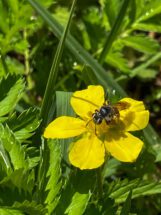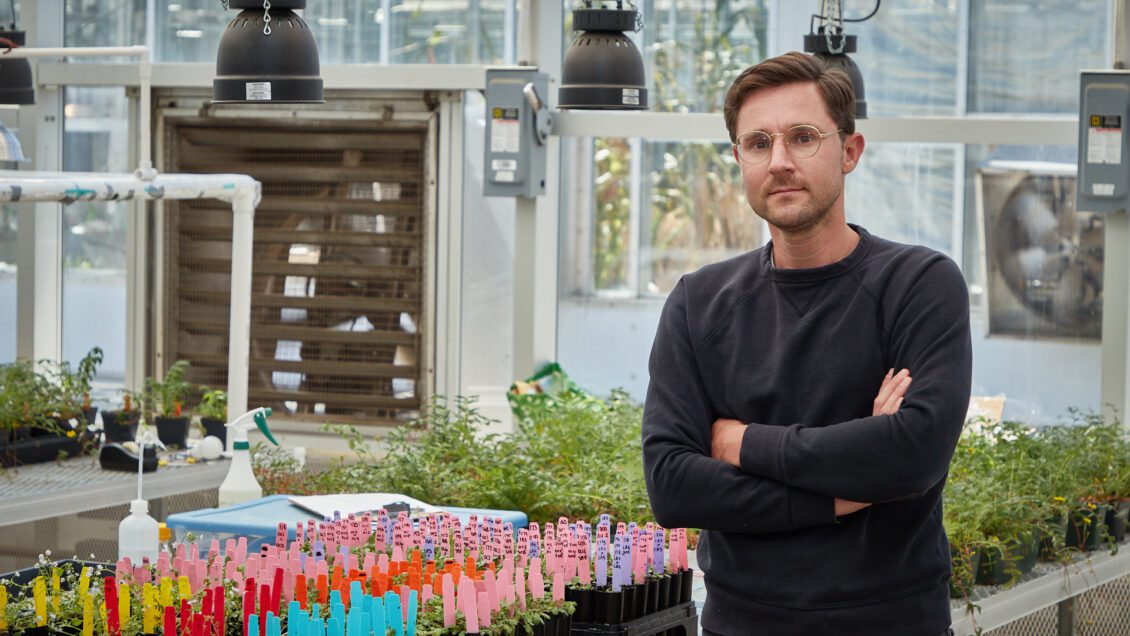When we see large fields brimming with flowering plants and plenty of bees and other pollinators, people may assume that plant reproduction isn’t a problem.
But looks can be deceiving.
Research by Clemson University biologist Matthew Koski and former Clemson postdoctoral researcher Anita Cisternas-Fuentes has revealed that genetic diversity in a population of plants can play a major role in reproductive output.

Pollinators such as birds, bees, butterflies and other insects are crucial for the reproduction of almost 90% of the world’s flowering plants. Flowers contain male parts that make pollen and female parts that contain ovules. Pollinators carry the pollen from the male part to the female part. Once pollen is transferred, the ovules develop into seeds.
The capacity for reproduction is higher than what is realized in most populations.
“Pollen limitation is a main factor that reduces reproduction in plants and is pervasive across plant populations,” said Koski, an assistant professor in the Department of Biological Sciences.
Much of the research on pollen limitation — a reduction in seed production due to inadequate pollen receipt — has focused on ecological factors, such as pollinator scarcity and the number of plants flowering in a population.
Impacts pollen limitation
But genetic diversity can also impact pollen limitation in a couple of ways, Koski said.
Some plants have the ability to reproduce asexually by cloning themselves.
“You can go out into a plant population that looks huge, but genetically, if it’s just a handful of clones, there’s not a lot of individuals contributing to sexual reproduction,” Koski said, adding that in highly clonal plant populations, there might be reduced investment in sexual reproduction altogether, reducing the amount of pollen made per flower. “You can have this huge population of plants with lots of flowers, but not have much pollen being produced.”
The genetic population size, or effective population, itself might reduce the quality of pollen that can be transferred. Some plants are self-incompatible and are not able to produce seeds if their flowers are pollinated by their own flowers or by flowers from plants that are genetically the same.
Finding right mating type
“In a lot of systems of plants that have self-incompatibility, you have to find the right mating type in order to reproduce. So, if all plants in the population have a similar mating type, that pollen might get transferred from one flower to another, but they can’t reproduce,” Koski said.

Koski and Cisternas-Fuentes studied Argentina anserina, also known as silver cinquefoil, a plant that is widespread throughout North America and Eurasia and also occurs in Chile, Australia and New Zealand.
“We found that more genetically diverse populations reproduce more. They make more seed because they have higher quality pollen and they make more pollen,” Koski said. “Populations that are genetically small and highly clonal make less pollen per flower.”
That was true of the natural populations of silver cinquefoil they studied in the wild in Colorado, as well as those in a greenhouse.
“That suggests there’s some genetic component to reduced pollen production,” said Koski, who added that to his knowledge, the study is one of the first links between population genetic diversity and how much pollen is actually produced by these flowers.
Increased pollinator visitation
Other studies have examined pollinator visitation rates and said increased pollinator visitation rates will be great for reproductive output, Koski said.
“We found that’s only true in genetically diverse plant populations,” he said. “These highly clonal plant populations can get all of the pollinator visitation in the world, but if their pollen’s no good or there’s few individuals to mate with, it’s not going to contribute to reproductive output. So, yes, pollinators are extremely important, but they were most important in genetically large plant populations.”
Koski said the research has implications for conservation and agriculture.
“When thinking about restoration efforts in animal pollinated plants, we definitely need to be not only considering the number of plants we put out, but also where they’re sourced from and how much genetic diversity we’re putting into a given restoration effort,” Koski said.
That’s especially important in plant species that are self-incompatible, he said.
“If you plant a single genotype of a self-incompatible plant that can’t mate with anybody else in the population, that population is pretty much doomed. So, in terms of reproductive output, we really need to be thinking about the genetic diversity component of plant populations,” he said.
More genetically diverse, higher pollinator visitation
Koski said they also saw that more genetically diverse populations had higher pollinator visitation rates independent of how many flowers were actually in the population.
“What that suggests is that there might be something about the quality of the rewards in those genetically diverse plant populations that is attracting more pollinators. It was a really strong pattern where the more genetically diverse the population is, the way more pollinator visits it got,” he said.
Detailed findings can be found in the paper titled “Effective population size mediates the impact of pollination services on pollen limitation,” published in the journal Proceedings of the Royal Society B.
Get in touch and we will connect you with the author or another expert.
Or email us at news@clemson.edu

